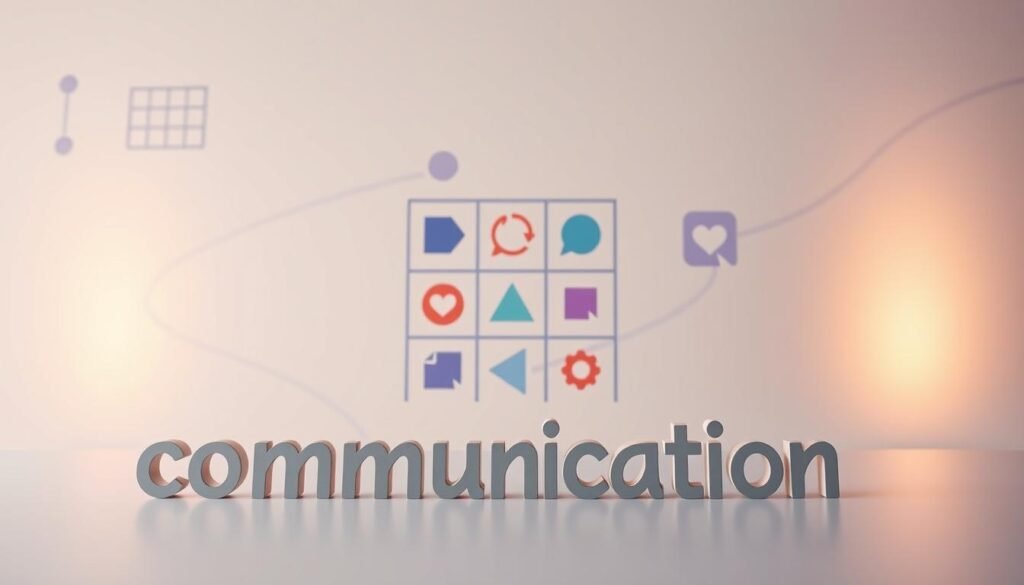How often do you take a step back to assess your own work and skills? Self-evaluation is a powerful tool for growth, yet many employees struggle to articulate their strengths and areas for improvement. Whether you’re preparing for a formal performance review or simply aiming to grow professionally, knowing the right review phrases can make all the difference.
This guide provides actionable examples to help you craft meaningful self-assessments. From time management to teamwork, you’ll find phrases tailored to various professional scenarios. By using these insights, you can provide feedback that fosters growth and aligns with modern workplace trends.
Ready to take charge of your professional development? Let’s dive into the strategies that can transform your self-evaluation process.
Key Takeaways
- Discover over 135 self-evaluation phrases for various skill categories.
- Learn how to align your feedback with organizational goals.
- Understand the latest trends in employee feedback preferences.
- Gain expert tips for adapting phrases to hybrid work environments.
- Explore tools to streamline the review process effectively.
Introduction to Performance Review Phrases

Evaluating your own work can be a game-changer for professional growth. When done effectively, self-assessment helps you identify areas for improvement and celebrate your achievements. This process is especially important in today’s fast-paced work environment, where continuous learning is key to staying competitive.
Why Performance Reviews Matter
Performance reviews are more than just formal evaluations. They provide a structured way to measure employee performance and align individual efforts with organizational goals. Specific feedback examples can lead to an 8x improvement likelihood, making them a powerful tool for growth.
Integrating 360-degree feedback strategies ensures a well-rounded perspective. This approach combines insights from peers, managers, and self-assessments to create a comprehensive view of strengths and areas for development.
The Role of Self-Evaluation in Performance Reviews
Self-evaluation is a cornerstone of personal accountability. It encourages employees to reflect on their new skills and communication skills, fostering a proactive approach to professional development. However, cognitive biases like overconfidence or imposter syndrome can affect self-rating accuracy.
Digital tools can help track progress between reviews, providing measurable data to support self-assessment narratives. For example, a tech company successfully implemented peer-review calibration to enhance the accuracy of self-evaluations.
By using structured templates and metrics-driven approaches, employees can create effective self-evaluation narratives. These strategies not only highlight achievements but also set the stage for future growth.
Communication-Based Performance Review Phrases

Effective communication is the backbone of any successful team. Whether it’s sharing ideas, resolving issues, or meeting deadlines, how you communicate can make or break workplace efficiency. This section provides actionable examples to help you evaluate and improve your communication skills.
Positive Communication Examples
Strong communicators excel in active listening and clarity. For instance, phrases like “Consistently provides clear instructions to colleagues” or “Effectively resolves conflicts by offering practical solutions” highlight these strengths. Recognizing these behaviors can encourage continued growth and collaboration.
Constructive Feedback on Communication
Addressing communication gaps is equally important. Phrases such as “Needs to respond more promptly to team requests” or “Avoids crucial conversations with management” offer constructive feedback. These examples help identify areas for improvement while maintaining a supportive tone.
By focusing on active listening, meeting participation, and follow-through, you can create a more cohesive and productive work environment. Use these phrases to foster open dialogue and continuous improvement.
Time Management Phrases for Performance Reviews
Managing your time effectively is crucial for meeting workplace demands. Strong time management ensures you meet deadlines, handle tasks efficiently, and balance your responsibilities. Whether you’re excelling in this area or need improvement, the right feedback can guide your growth.
Positive Time Management Examples
Recognizing strengths in time management can boost confidence and productivity. Phrases like “Consistently meets deadlines without compromising quality” or “Effectively prioritizes tasks to achieve goals” highlight these skills. Such feedback encourages employees to maintain their strong habits.
Constructive Feedback on Time Management
Addressing areas for improvement is equally important. For example, “Frequently underestimates task durations, leading to delays” or “Missed deadlines impacting client deliverables” provide actionable insights. These examples help identify gaps while maintaining a supportive tone.
By focusing on prioritization, delegation, and tracking, you can enhance your time management skills. Use these phrases to foster accountability and continuous growth in your professional journey.
Adaptability in Performance Reviews
In today’s dynamic workplace, adaptability is a critical skill for success. Whether it’s embracing new skills, adjusting to a shifting environment, or resolving unexpected issues, being flexible can set you apart. This section explores how to evaluate and improve your adaptability in professional settings.
Adaptability isn’t just about reacting to change—it’s about proactively finding solutions. Employees who excel in this area often demonstrate a willingness to learn, collaborate, and innovate. Below, we’ll look at examples of positive adaptability and areas for improvement.
Positive Adaptability Examples
Strong adaptability is evident in employees who embrace change with confidence. Phrases like “Quickly adjusts to new processes and tools” or “Seeks opportunities to learn and grow” highlight this skill. Recognizing these behaviors can encourage a culture of continuous improvement.
Another example is “Effectively navigates cross-departmental projects.” This shows an ability to collaborate across teams and adapt to diverse working styles. Such feedback reinforces the value of flexibility in achieving organizational goals.
Constructive Feedback on Adaptability
Addressing resistance to change is crucial for growth. Phrases like “Resists updated compliance protocols” or “Avoids cross-department collaboration” identify areas for improvement. These examples provide actionable insights while maintaining a supportive tone.
For instance, “Struggles to transition from legacy systems” highlights a dependency on outdated methods. Offering strategies like training or mentorship can help bridge this gap and foster adaptability.
- Expand your comfort zone by taking on new challenges.
- Participate in interdepartmental projects to build collaboration skills.
- Update process documentation regularly to stay current.
- Engage in scenario planning exercises to prepare for change.
- Seek feedback and implement it promptly to improve.
By focusing on these strategies, you can enhance your adaptability and thrive in any professional setting. Use these insights to foster growth and resilience in your career.
Creativity and Innovation Phrases
Creativity is the driving force behind innovation in any professional setting. It fuels fresh ideas and opens doors to new opportunities. Whether you’re brainstorming solutions or refining processes, a creative approach can lead to significant breakthroughs.
However, fostering creativity requires more than just thinking outside the box. It involves actively seeking improvement and embracing challenges. Below, we’ll explore examples of positive creativity and areas for growth.
Positive Creativity Examples
Employees who excel in creativity often bring unique perspectives to the table. Phrases like “Consistently proposes innovative solutions to complex problems” or “Transforms challenges into opportunities for growth” highlight these strengths. Recognizing such behaviors encourages a culture of innovation.
Another example is “Effectively integrates customer feedback into product design.” This demonstrates a commitment to creative collaboration and customer-centric thinking. Such feedback reinforces the value of creativity in achieving organizational goals.
Constructive Feedback on Creativity
Addressing gaps in creativity is essential for growth. Phrases like “Over-relies on established methods” or “Avoids high-risk/high-reward projects” identify areas for improvement. These examples provide actionable insights while maintaining a supportive tone.
For instance, “Struggles to incorporate market trends into strategies” highlights a need for better trend analysis. Offering resources like training or mentorship can help bridge this gap and foster creativity.
- Enhance prototyping speed to accelerate innovation.
- Increase participation in customer co-creation initiatives.
- Benchmark against competitors to identify creative gaps.
- Utilize experimental budgets to test new ideas.
- Engage in industry conferences to stay updated on trends.
By focusing on these strategies, you can unlock your creative potential and drive innovation in your professional journey.
Teamwork and Collaboration Phrases
Teamwork is the foundation of success in any collaborative environment. When team members work together effectively, they can achieve shared goals and overcome challenges. This section provides examples to help you evaluate and improve your teamwork and collaboration skills.
Positive Teamwork Examples
Strong teamwork is evident in employees who actively contribute to group efforts. Phrases like “Consistently supports colleagues to achieve team goals” or “Effectively resolves issues through open communication” highlight these strengths. Recognizing such behaviors fosters a positive and productive work culture.
Another example is “Takes initiative to share responsibilities during busy periods.” This demonstrates a commitment to teamwork and a willingness to step up when needed. Such feedback encourages continued collaboration and mutual support.
Constructive Feedback on Teamwork
Addressing gaps in teamwork is essential for growth. Phrases like “Dominates discussions in group settings” or “Withholds critical project information” identify areas for improvement. These examples provide actionable insights while maintaining a supportive tone.
For instance, “Avoids cross-department collaboration” highlights a need for better teamwork across teams. Offering strategies like training or mentorship can help bridge this gap and foster collaboration.
- Analyze meeting participation metrics to identify gaps.
- Encourage credit sharing to build trust among team members.
- Promote cross-training to enhance skill diversity.
- Increase feedback solicitation to improve communication.
- Utilize remote collaboration tools for better connectivity.
- Maintain stakeholder communication logs for transparency.
- Conduct team pulse surveys to gauge satisfaction.
By focusing on these strategies, you can strengthen your teamwork skills and contribute to a more cohesive and effective team environment.
Leadership Skills in Performance Reviews
Strong leadership is essential for driving team success and achieving organizational goals. Whether you’re guiding a team or managing projects, your ability to inspire and support others plays a critical role in workplace dynamics. Evaluating your leadership skills can help you identify strengths and areas for improvement.
Effective leaders balance management tasks with emotional intelligence, ensuring their teams feel valued and motivated. However, even the best leaders can face challenges like micromanaging or avoiding difficult conversations. Below, we’ll explore examples of positive leadership and areas for growth.
Positive Leadership Examples
Great leaders inspire trust and collaboration. Phrases like “Encourages team members to take ownership of their responsibilities” or “Provides clear direction while fostering creativity” highlight these strengths. Recognizing such behaviors can reinforce effective leadership practices.
Another example is “Effectively resolves conflicts by listening to all perspectives.” This demonstrates a balanced approach to problem-solving and team dynamics. Such feedback encourages leaders to continue building a supportive and productive environment.
Constructive Feedback on Leadership
Addressing leadership gaps is crucial for growth. Phrases like “Micromanages direct reports, limiting their autonomy” or “Avoids difficult conversations, leading to unresolved issues” provide actionable insights. These examples help leaders identify areas for improvement while maintaining a constructive tone.
For instance, “Struggles to delegate tasks effectively” highlights a need for better task distribution. Offering strategies like training or mentorship can help bridge this gap and enhance leadership skills.
- Assess delegation capabilities to improve efficiency.
- Measure emotional intelligence metrics for better team engagement.
- Identify strategic prioritization errors to align with goals.
- Address succession planning deficiencies for long-term success.
- Overcome change management resistance through clear communication.
- Use 360-degree feedback to identify discrepancies and areas for growth.
By focusing on these strategies, you can strengthen your leadership skills and create a more effective and motivated team.
Quality of Work Phrases
Delivering high-quality work is a cornerstone of professional success. It reflects your dedication, attention to detail, and ability to meet expectations. Whether you’re excelling in this area or seeking improvement, the right feedback can guide your growth.
Positive Quality of Work Examples
Recognizing excellence in work quality boosts confidence and motivation. Phrases like “Consistently delivers accurate and thorough results” or “Exceeds expectations by ensuring all tasks meet high standards” highlight these strengths. Such feedback encourages employees to maintain their strong habits.
Another example is “Demonstrates exceptional attention to detail in complex projects.” This shows a commitment to precision and reliability. Such recognition reinforces the value of quality in achieving organizational goals.
Constructive Feedback on Quality
Addressing gaps in work quality is essential for growth. Phrases like “Rushes tasks, compromising accuracy” or “Ignores established protocols, leading to errors” provide actionable insights. These examples help identify areas for improvement while maintaining a supportive tone.
For instance, “Struggles to meet deadlines without sacrificing quality” highlights a need for better time management. Offering strategies like training or mentorship can help bridge this gap and enhance work quality.
- Conduct root cause analysis to identify recurring issues.
- Implement peer reviews to ensure consistency.
- Participate in training programs to refine skills.
- Use quality metric dashboards to track progress.
- Analyze client complaint patterns for actionable insights.
- Perform SOP compliance audits to maintain standards.
- Develop corrective action plans to address deficiencies.
By focusing on these strategies, you can elevate the quality of your work and contribute to a more efficient and effective professional environment.
Dependability and Reliability Phrases
Being dependable and reliable is a cornerstone of professional success. These qualities ensure that tasks are completed on time and responsibilities are met consistently. Whether you’re excelling in this area or seeking improvement, the right feedback can guide your growth.
Positive Dependability Examples
Recognizing strengths in dependability boosts confidence and trust. Phrases like “Consistently meets deadlines without reminders” or “Takes ownership of tasks, ensuring they’re completed accurately” highlight these skills. Such feedback encourages employees to maintain their strong habits.
Another example is “Always available to support team members during critical projects.” This shows a commitment to reliability and teamwork. Such recognition reinforces the value of dependability in achieving organizational goals.
Constructive Feedback on Reliability
Addressing gaps in reliability is essential for growth. Phrases like “Misses maintenance schedules, leading to delays” or “Avoids after-hours support, impacting team efficiency” provide actionable insights. These examples help identify areas for improvement while maintaining a supportive tone.
For instance, “Struggles to prioritize tasks effectively” highlights a need for better workload management. Offering strategies like training or mentorship can help bridge this gap and enhance reliability.
- Analyze attendance patterns to identify reliability gaps.
- Track task ownership metrics to ensure accountability.
- Address communication latency issues for better coordination.
- Review priority misjudgment cases to improve decision-making.
- Implement workload management training for better efficiency.
- Develop an accountability framework to enhance dependability.
- Ensure adherence to escalation protocols for timely issue resolution.
By focusing on these strategies, you can strengthen your dependability and reliability, contributing to a more efficient and effective professional environment.
Goal Setting and Achievement Phrases
Setting clear and achievable goals is a vital skill for professional growth. Whether you’re leading a team or managing your own tasks, effective goal setting ensures alignment with organizational objectives. This section provides examples to help you evaluate and improve your approach to goal setting and achievement.
Positive Goal Setting Examples
Strong goal setters excel in creating realistic and measurable objectives. Phrases like “Consistently sets achievable targets aligned with team goals” or “Breaks down complex projects into manageable tasks” highlight these strengths. Recognizing such behaviors encourages a proactive approach to responsibilities.
Another example is “Effectively communicates progress toward milestones.” This demonstrates accountability and transparency, fostering trust within the team. Such feedback reinforces the value of goal setting in driving success.
Constructive Feedback on Goal Setting
Addressing gaps in goal setting is essential for improvement. Phrases like “Sets unrealistic timelines, leading to missed deadlines” or “Neglects development objectives, limiting growth” provide actionable insights. These examples help identify areas for improvement while maintaining a supportive tone.
For instance, “Struggles to align personal goals with team priorities” highlights a need for better alignment. Offering strategies like coaching or mentorship can help bridge this gap and enhance goal-setting skills.
- Address benchmarking deficiencies to set realistic goals.
- Increase progress review frequency to stay on track.
- Incorporate risk assessments to anticipate challenges.
- Integrate stakeholder input for better alignment.
- Align goals with career path for long-term growth.
- Validate metrics to ensure measurable outcomes.
- Utilize coaching programs to refine goal-setting skills.
By focusing on these strategies, you can strengthen your goal-setting abilities and contribute to a more efficient and effective professional environment.
Problem-Solving and Decision-Making Phrases
Strong problem-solving skills are essential for navigating workplace challenges. Whether you’re addressing unexpected issues or making critical decisions, your approach can significantly impact outcomes. Evaluating your problem-solving abilities helps identify strengths and areas for improvement.
Effective problem-solving involves analyzing root causes, considering alternative solutions, and implementing actionable plans. Below, we’ll explore examples of positive problem-solving and areas for growth.
Positive Problem-Solving Examples
Employees who excel in problem-solving often demonstrate analytical thinking and creativity. Phrases like “Effectively identifies root causes to resolve complex issues” or “Proposes innovative solutions to streamline processes” highlight these strengths. Recognizing such behaviors encourages a proactive approach to challenges.
Constructive Feedback on Problem-Solving
Addressing gaps in problem-solving is crucial for growth. Phrases like “Jumps to conclusions without thorough analysis” or “Avoids escalations until issues become critical” provide actionable insights. These examples help identify areas for improvement while maintaining a supportive tone.
- Increase root cause analysis depth for better understanding.
- Consider alternative solutions to enhance decision-making.
- Track consultation frequency metrics for collaboration.
- Address implementation planning flaws for smoother execution.
- Improve cost-benefit analysis quality for informed decisions.
- Conduct post-decision evaluations to measure success.
- Recommend training programs to refine problem-solving skills.
By focusing on these strategies, you can strengthen your problem-solving abilities and contribute to a more efficient and effective professional environment.
Customer Service Phrases
Exceptional customer service is the backbone of any successful business. It’s not just about solving problems but creating positive experiences that build trust and loyalty. Evaluating your customer service skills can help you identify strengths and areas for improvement.
Whether you’re excelling in this area or need to refine your approach, the right feedback can guide your growth. Below, we’ll explore examples of positive customer service and areas for development.
Positive Customer Service Examples
Strong customer service skills are evident in employees who go above and beyond. Phrases like “Consistently resolves issues with empathy and efficiency” or “Exceeds expectations by anticipating customer needs” highlight these strengths. Recognizing such behaviors encourages a culture of excellence.
Another example is “Effectively communicates solutions, ensuring customer satisfaction.” This demonstrates clarity and professionalism, fostering trust and loyalty. Such feedback reinforces the value of exceptional service.
Constructive Feedback on Customer Service
Addressing gaps in customer service is essential for growth. Phrases like “Fails to personalize interactions, leading to dissatisfaction” or “Delays critical issue escalation, impacting resolution times” provide actionable insights. These examples help identify areas for improvement while maintaining a supportive tone.
- Analyze tone analysis results to refine communication.
- Conduct product knowledge audits for better expertise.
- Track response time benchmarks for efficiency.
- Assess empathy metrics to enhance customer interactions.
- Review service protocol deviations for consistency.
- Gather client survey insights for actionable feedback.
- Participate in coaching programs to refine skills.
By focusing on these strategies, you can elevate your customer service skills and contribute to a more positive and impactful customer experience.
Efficiency and Productivity Phrases
Maximizing efficiency and productivity is key to achieving workplace success. When employees streamline their workflows and manage their tasks effectively, they can meet responsibilities with confidence. This section provides examples to help you evaluate and improve your approach to efficiency and productivity.
Positive Efficiency Examples
Employees who excel in efficiency often demonstrate strong organizational skills. Phrases like “Consistently completes tasks ahead of schedule” or “Optimizes workflows to save time and resources” highlight these strengths. Recognizing such behaviors encourages a culture of continuous improvement.
Another example is “Effectively prioritizes tasks to meet deadlines.” This shows a commitment to productivity and time management. Such feedback reinforces the value of efficiency in achieving organizational goals.
Constructive Feedback on Efficiency
Addressing gaps in efficiency is essential for growth. Phrases like “Wastes materials regularly” or “Resists process optimizations” provide actionable insights. These examples help identify areas for improvement while maintaining a supportive tone.
For instance, “Struggles to manage multiple tasks simultaneously” highlights a need for better workload management. Offering strategies like training or mentorship can help bridge this gap and enhance efficiency.
- Conduct time-motion studies to identify productivity gaps.
- Analyze error rate correlations to improve accuracy.
- Assess meeting effectiveness metrics for better time management.
- Review prioritization system gaps to enhance task management.
- Evaluate tool proficiency assessments for workflow optimization.
- Map workflows to identify automation opportunities.
By focusing on these strategies, you can elevate your efficiency and productivity, contributing to a more effective and successful professional environment.
Professionalism and Commitment Phrases
Professionalism and commitment are essential traits that shape workplace success and foster trust. These qualities ensure that employees handle their responsibilities with integrity and dedication. Whether you’re excelling in this area or seeking improvement, the right feedback can guide your growth.
Professionalism goes beyond following rules—it’s about maintaining a positive attitude and respectful approach in all interactions. Commitment, on the other hand, reflects your dedication to achieving goals and supporting your team. Below, we’ll explore examples of positive professionalism and areas for development.
Positive Professionalism Examples
Employees who demonstrate professionalism often earn the trust and respect of their peers. Phrases like “Consistently maintains a respectful and courteous demeanor” or “Handles challenging issues with grace and composure” highlight these strengths. Recognizing such behaviors encourages a culture of mutual respect.
Another example is “Takes ownership of tasks, ensuring they’re completed with precision.” This shows a commitment to excellence and accountability. Such feedback reinforces the value of professionalism in achieving organizational goals.
Constructive Feedback on Professionalism
Addressing gaps in professionalism is crucial for growth. Phrases like “Violates dress code policies” or “Uses inappropriate humor in professional settings” identify areas for improvement. These examples provide actionable insights while maintaining a supportive tone.
- Analyze policy violation frequency to address recurring issues.
- Conduct communication tone analysis for better interactions.
- Review social media guideline adherence to maintain professionalism.
- Gather peer relationship surveys to identify conduct gaps.
- Ensure conflict of interest avoidance for ethical practices.
- Measure cultural sensitivity metrics for inclusive behavior.
- Develop improvement plans to address specific areas.
By focusing on these strategies, you can enhance your professionalism and commitment, contributing to a more positive and effective workplace environment.
Attendance and Punctuality Phrases
Consistent attendance and punctuality are key to maintaining workplace efficiency and meeting responsibilities. Whether you’re excelling in this area or need improvement, the right feedback can guide your growth. This section provides examples to help you evaluate and enhance your approach to attendance and punctuality.
Positive Attendance Examples
Employees who excel in attendance often set a strong example for their peers. Phrases like “Consistently arrives on time, ensuring smooth team operations” or “Exceeds expectations by rarely missing work” highlight these strengths. Recognizing such behaviors encourages a culture of reliability and accountability.
Another example is “Takes initiative to cover shifts during busy periods.” This demonstrates a commitment to teamwork and meeting deadlines. Such feedback reinforces the value of attendance in achieving organizational goals.
Constructive Feedback on Attendance
Addressing gaps in attendance is essential for growth. Phrases like “Exceeds PTO allowances, impacting team productivity” or “Frequent Monday absences disrupt workflow” provide actionable insights. These examples help identify areas for improvement while maintaining a supportive tone.
For instance, “Struggles with tardiness, affecting project timelines” highlights a need for better time management. Offering strategies like schedule negotiation or wellness program referrals can help bridge this gap and enhance attendance.
- Analyze attendance patterns to identify recurring issues.
- Track FMLA compliance to ensure proper documentation.
- Calculate tardiness impact to address productivity gaps.
- Implement attendance improvement contracts for accountability.
- Refer employees to wellness programs for better work-life balance.
- Follow progressive discipline steps to address chronic absenteeism.
By focusing on these strategies, you can strengthen your attendance and punctuality, contributing to a more efficient and reliable professional environment.
Conclusion: Mastering Performance Review Phrases
Mastering the art of self-assessment is a transformative step in professional development. By leveraging tools like Leapsome’s AI-powered review tools and Rippling’s performance management software, you can streamline the evaluation process and ensure alignment with organizational goals.
Adopting best practices in performance management fosters a culture of continuous improvement. Encourage regular constructive feedback to enhance employee engagement and drive meaningful growth. Integrating these strategies into your workflow ensures a balanced approach to self-assessment and team development.
Looking ahead, embracing innovative tools and feedback-driven cultures will shape the future of workplace evaluations. Start refining your approach today to unlock your full potential and contribute to a thriving professional environment.
FAQ
Why are self-evaluations important in performance reviews?
Self-evaluations allow employees to reflect on their achievements, challenges, and areas for improvement. They provide a platform for individuals to share their perspective, which helps managers gain a clearer understanding of their contributions and goals.
How can I give constructive feedback on communication skills?
Focus on specific examples where improvement is needed. For instance, highlight instances where clarity or active listening could enhance interactions. Offer actionable suggestions to help employees develop their communication abilities.
What are some examples of positive time management feedback?
You can praise employees for consistently meeting deadlines, prioritizing tasks effectively, or managing multiple projects efficiently. Highlight how their organizational skills contribute to the team’s success.
How do I address adaptability in a performance review?
Recognize instances where employees successfully handled change or embraced new challenges. For areas needing improvement, discuss strategies to enhance flexibility and openness to new ideas.
What are effective ways to evaluate teamwork and collaboration?
Highlight examples of how employees contributed to group projects, supported colleagues, or fostered a positive team environment. For constructive feedback, address any challenges in working cohesively with others.
How can I provide feedback on leadership skills?
Acknowledge leadership qualities like decision-making, mentorship, and motivating others. For improvement areas, suggest ways to enhance delegation, communication, or conflict resolution skills.
What should I focus on when evaluating quality of work?
Emphasize attention to detail, accuracy, and consistency in delivering high-quality results. If improvements are needed, provide specific examples and guidance to help employees elevate their work standards.
How do I assess dependability and reliability?
Highlight instances where employees consistently met expectations, fulfilled commitments, or went above and beyond. For improvement, discuss ways to enhance consistency and accountability.
What are some examples of positive goal-setting feedback?
Praise employees for setting realistic, measurable goals and achieving them. Recognize their ability to align personal objectives with organizational priorities.
How can I evaluate problem-solving and decision-making skills?
Highlight examples where employees effectively resolved challenges or made sound decisions. For improvement, suggest ways to enhance analytical thinking or explore alternative solutions.
What are key aspects to consider in customer service evaluations?
Focus on responsiveness, empathy, and the ability to resolve customer issues. Recognize exceptional service and provide constructive feedback to improve interactions with clients.
How do I provide feedback on efficiency and productivity?
Acknowledge employees who consistently complete tasks on time and contribute to streamlined processes. For improvement, discuss strategies to enhance focus and prioritize high-impact activities.
What should I look for when evaluating professionalism and commitment?
Recognize employees who demonstrate integrity, accountability, and a strong work ethic. For areas needing improvement, discuss ways to align behavior with organizational values.
How can I address attendance and punctuality in a review?
Praise employees who consistently arrive on time and maintain good attendance. For improvement, discuss the importance of reliability and suggest strategies to address any issues.





